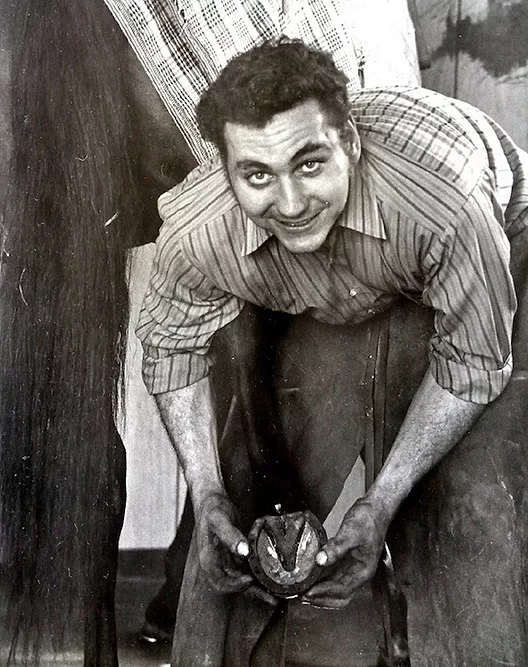I recently discovered the Roosevelt Raceway website. When I saw the photographs of trainers, drivers and owners, I realized that an unsung hero of Roosevelt Raceway had been overlooked.
John Santoro, also known as “Santini” on the track, was considered one of the top blacksmiths on Roosevelt Raceway in the late ’70s and until the day the racetrack closed in ’88 — when Santoro’s reputation followed him to Meadow Lands and Yonkers. He developed a reputation as one of the leading practitioners of his craft. He was sought after by national and international trainers, drivers and owners. Santoro’s leathered and calloused hands crafted and molded the horseshoes that enabled champion horses and their drivers, such as Jimmy Cruise Sr., Jimmy Cruise Jr., John Chapman Sr. and John Chapman Jr. and Herve Filion (just to name a few), to break harness racing records.
Dr. Bernard Brennan, Roosevelt’s veterinarian, called upon Santoro to work on difficult cases. Today’s blacksmith, or farrier, has access to technology and standards that were established throughout the 1960s to the 1990s. In the ’70s and ’80s, Santoro relied on his ingenuity and his ability to see things that others did not. He experimented with developing patches for the horses that had problems such as a quarter crack. As Santoro still says today, “A horse in the barn does not make money.”
Patches had already been around in the ’70s and ’80s, but there was a lot of room for improvement. Santoro explains that the patches did not stick, or stay in place — and worst of all, they did not let the horse’s foot heal. Santoro’s drive to identify a solution led him to experimenting with proxies for the patch and soaking solutions. Santoro finally found the right mix and developed a soaking solution and patch that saved many horses and races.
Over the years, Santoro’s work in Roosevelt, Yonkers and Meadowlands, was never overlooked. Owners, trainers and drivers brought their horses to him because they knew that an improperly shod horse risked developing an awkward stride, back strain, muscle pulls or worse conditions ... besides risking the race. As Jimmy Cruise Jr. says to this day, “Johnny was the best — there was no other like Johnny that could shoe horses like he did.” Santoro worked on 8 to 12 horses a day for various trainers. Today, blacksmiths are typically assisted by grooms, who hold the animal. I recall walking into Santoro’s blacksmith shop while he was under the horse, pulling off the old shoe, smoothing the bottom of the hoof with an emery board, holding the new shoe over the hoof, then securing it by driving nails through the hoof wall — all by himself. I remember how backbreaking it was for him to work with animals that were prone to fight and flight.
Santoro has not forgotten the man who taught him his craft, David Spence, a giant in the world of blacksmiths in harness racing. Santoro forged lifetime friends while crafting his custom-made horseshoes. Jimmy Cruise Sr. and John Chapman Sr. served as mentors for him. Cruise Jr. and Chapman Jr. were and continue to be more like brothers than just friends to Santoro.
Santoro was a blacksmith for more than 20 years. His determination, self-reliance and self-deprecating humor have helped him through life’s challenges — including a terminal illness. Today, he tells his stories of the famous horses he shod and describes their quirky personalities. He savors memories and victories of a place where Santoro — or “Santini” — worked in the background, in late morning or early afternoon, after training hours had stopped and before the races began. This was a place where, while shaping his horseshoes one by one, he contributed to shaping the history of harness racing. It’s a place where he should never be forgotten — Roosevelt Raceway.







